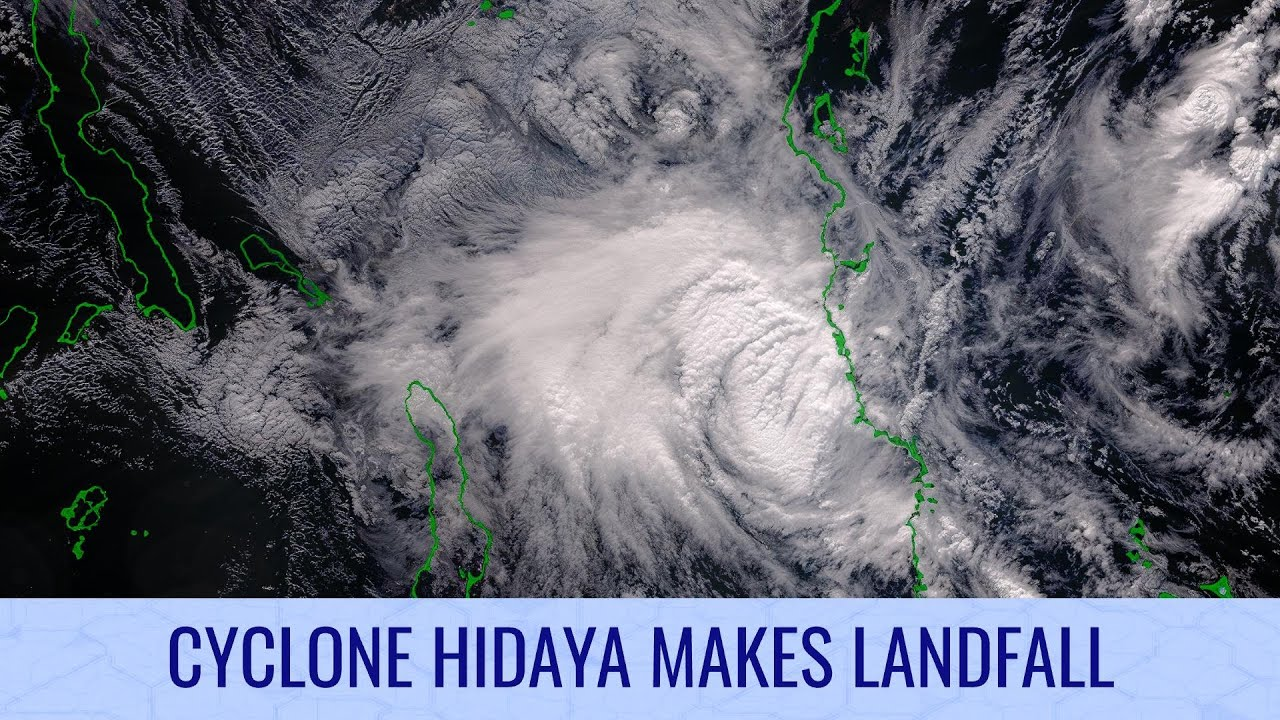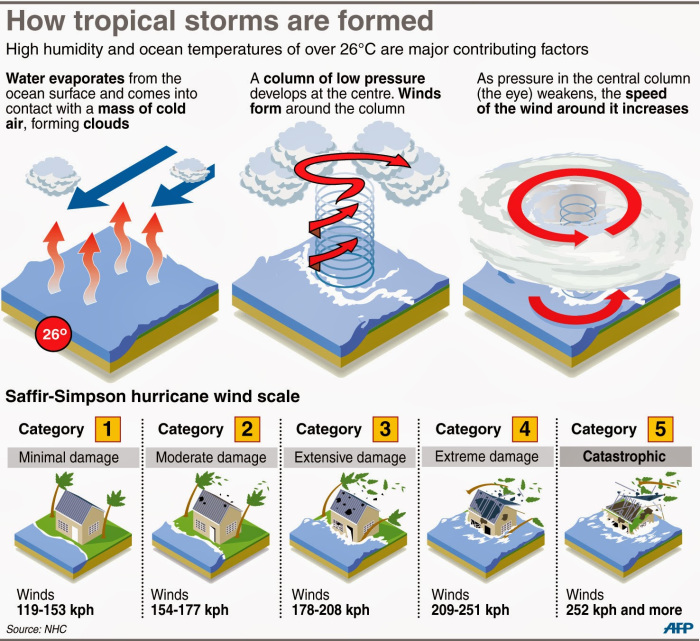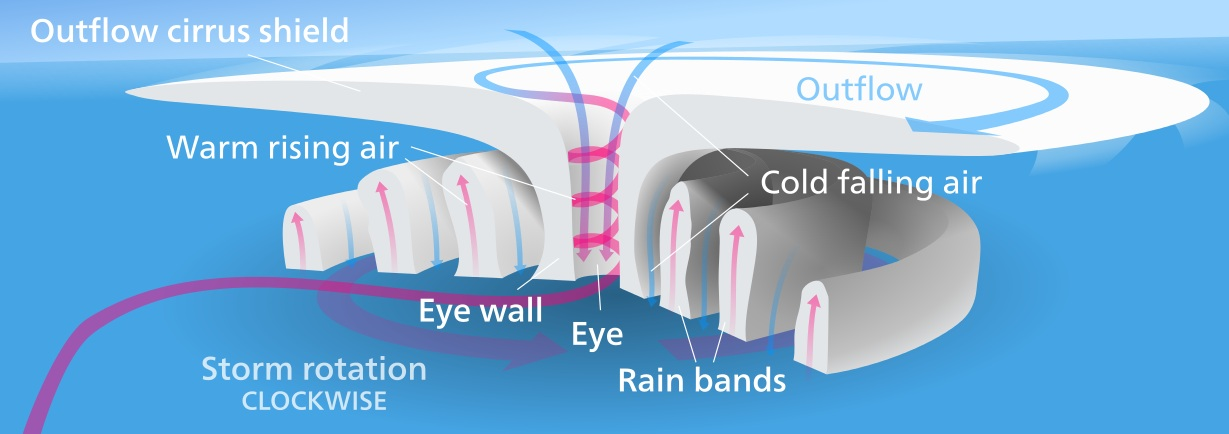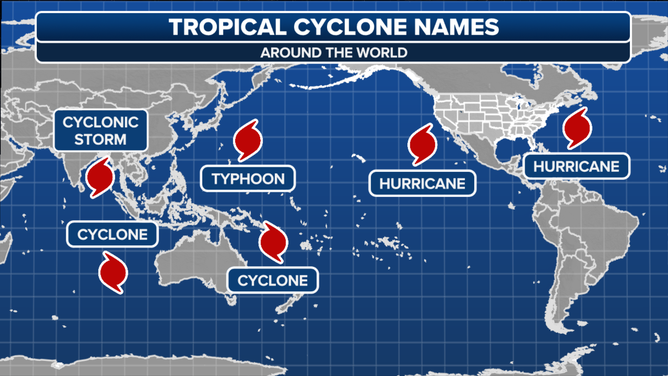Description

Copyright infringement not intended
Picture Courtesy: https://www.youtube.com/watch?v=rqvtUDqFgZU
Context: Cyclone Hidaya made landfall near Dar es Salaam, Tanzania.
Details
- Tropical Cyclone Hidaya made landfall on Mafia Island, located south-southeast of Dar es Salaam, Tanzania's largest city, on May 4, 2024.
- Despite making landfall, Cyclone Hidaya substantially weakened and eventually disappeared.
- The cyclone brought heavy rainfall to parts of Tanzania, with specific weather stations reporting significant rainfall amounts within a short period.
Tropical Cyclone
- A tropical cyclone is a powerful, circular storm that originates over warm tropical oceans and is characterized by low atmospheric pressure, high winds, and heavy rainfall.
- These storms derive their energy from the warm ocean waters, typically with sea surface temperatures of at least 26.5°C (80°F). The warm, moist air over the ocean rises and condenses, releasing latent heat, which drives the storm's circulation and intensifies the low-pressure system.

Structure of a Tropical Cyclone
- Eye: At the centre of the cyclone is the eye, which is a region of calm weather characterized by clear skies, warm temperatures, and very low atmospheric pressure. The eye is typically around 20-50 km in diameter and is surrounded by the eyewall.
- Eyewall: The eyewall surrounds the eye and contains the storm's most intense winds and rainfall. Wind speeds in the eyewall are typically the strongest within the cyclone, often exceeding 120 km/h and reaching much higher speeds in extreme cases.
- Rainbands: Spiral rainbands extend outward from the centre of the cyclone and bring bands of heavy rainfall and thunderstorms. These rainbands can contribute to the overall structure and intensity of the cyclone.
- Wind Field: The winds in a tropical cyclone rotate counterclockwise in the Northern Hemisphere and clockwise in the Southern Hemisphere due to the Coriolis Effect. The wind field is divided into different regions, including an outer region where winds increase uniformly toward the centre and the eyewall where the strongest winds are located.

Tropical cyclones are known by different names in different regions of the world:
- In the North Atlantic Ocean and eastern North Pacific, they are called hurricanes.
- In the western North Pacific (around the Philippines, Japan, and China), they are known as typhoons.
- In the western South Pacific and Indian Ocean, they are referred to as cyclones.

Tropical cyclones can produce a range of hazards, including:
- High winds are capable of causing extensive damage to structures and vegetation.
- Heavy rainfall leads to flooding and mudslides.
- Storm surges, which elevated sea levels, are caused by strong winds and low atmospheric pressure that can inundate coastal areas.
Conclusion
- Tropical cyclones are one of nature's most powerful and destructive meteorological phenomena, posing significant risks to coastal communities in tropical and subtropical regions of the world. Advanced forecasting and preparedness measures are crucial for mitigating the impacts of these hazardous storms.
Must Read Articles:
TROPICAL CYCLONE
Source:
Down to Earth
Britannica
|
PRACTICE QUESTION
Q. Which of the following features are characteristic of a mature tropical cyclone?
1. A well-defined, low-pressure centre called the "eye".
2. Spiraling bands of heavy rain and thunderstorms.
3. Strongest winds concentrated around the eye wall.
4. Outward movement of air in the upper atmosphere.
5. Relatively calm conditions within the eye.
How many of the above statements are correct?
A) Only two
B) Only three
C) Only four
D) All five
Answer: D
|



















